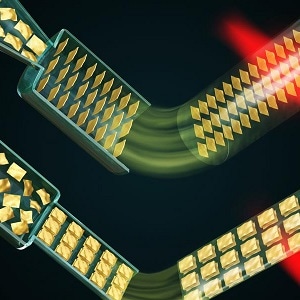Jan 25 2019
A team of researchers at Rensselaer Polytechnic Institute has developed a new microfluidics-assisted technique for developing high-performance macroscopic graphene fibers.
 Macroscopic graphene fibers
Macroscopic graphene fibers
Graphene fiber, a recently discovered member of the carbon fiber family, has potential applications in diverse technological areas, from:
- Energy storage
- Electronics and optics
- Electro-magnetics
- Thermal conductor and thermal management
- Structural applications
Their findings are published in a newly released issue of Nature Nanotechnology. It has historically been difficult to simultaneously optimize both the thermal/electrical and the mechanical properties of graphene fibers. However, the Rensselaer team has demonstrated their ability to do both.
High Thermal, Electrical & Mechanical Properties
Macroscopic graphene fibers can be manufactured by fluidics-enabled assembly from 2D graphene oxide sheets dispersed in aqueous solutions forming lyotropic liquid crystal.
- Strong shape and size confinements are demonstrated for fine control of the graphene sheet alignment and orientation, critical for realizing graphene fibers with high thermal, electrical, and mechanical properties.
- This microfluidics-enabled assembly method also provides the flexibility to tailor the microstructures of the graphene fibers by controlling flow patterns.
“The control of different flow patterns offers a unique opportunity and flexibility in tailoring macroscopic graphene structures from perfectly aligned graphene fibers and tubes to 3D open architecture with vertically aligned graphene sheet arrangement,” said Jie Lian, a professor in the Rensselaer Department of Mechanical, Aerospace, and Nuclear Engineering (MANE) and the lead author on the article.
Optimizing Fiber Assembly and Microstructure
The latest article builds on work by Lian’s group that was previously published in Science in 2015. This work, which is sponsored by the National Science Foundation, is a collaboration with fellow MANE researchers, including Associate Professor Lucy Zhang and Professor Suvranu De, who heads the department.
“This research paves the way for new sciences to optimize the fiber assembly and microstructure to develop high-performance graphene fibers,” said Lian. “This approach could be extended to other materials to manufacture hierarchical structures for diverse functional applications.”